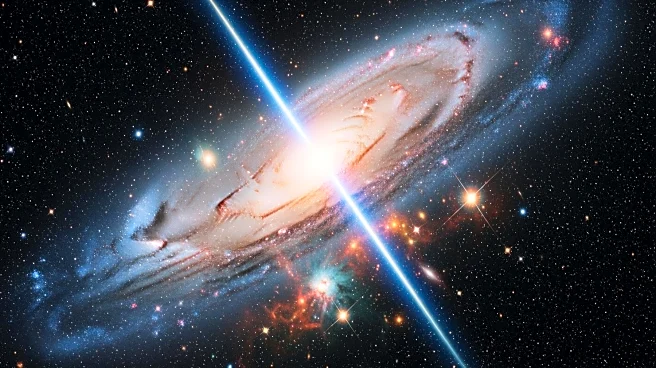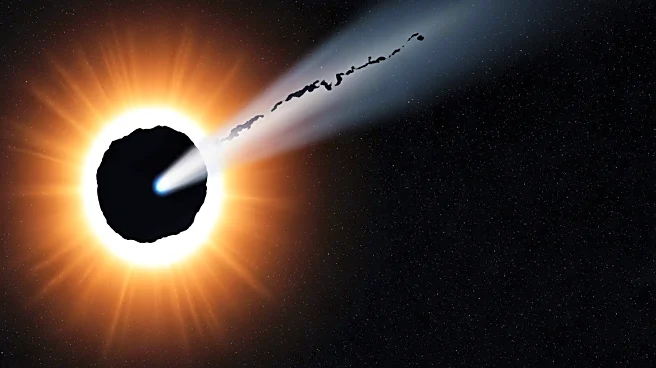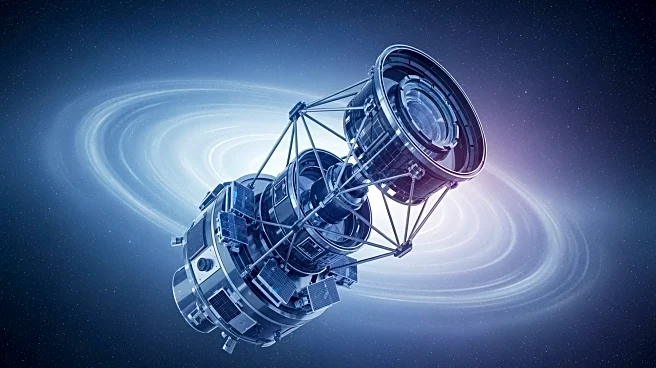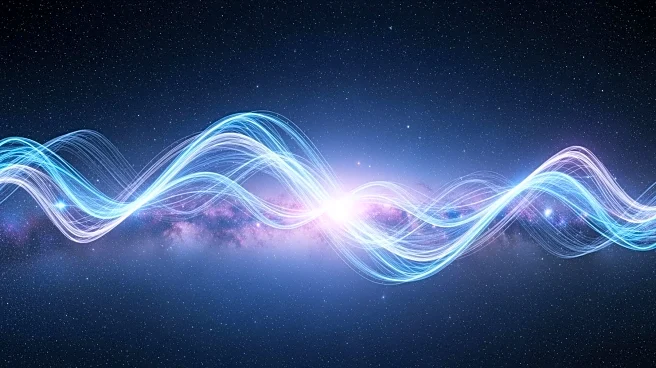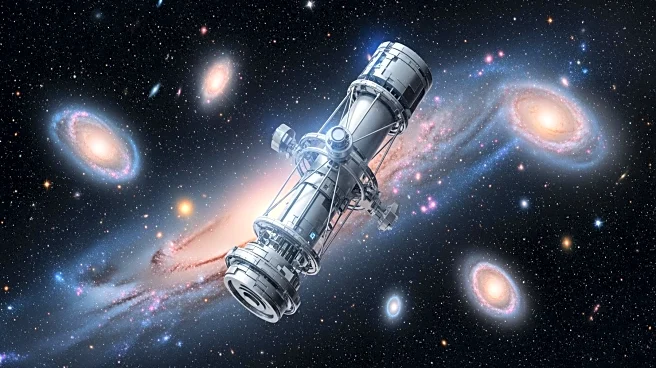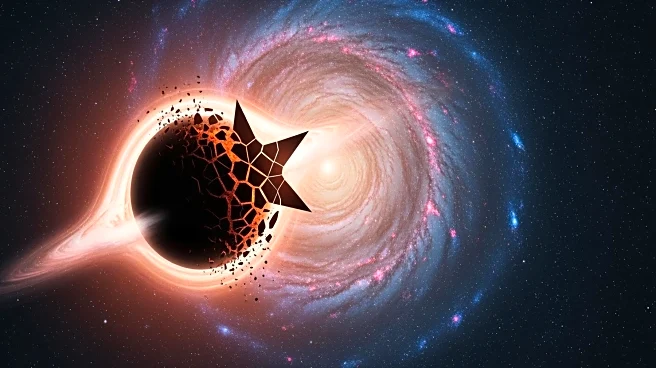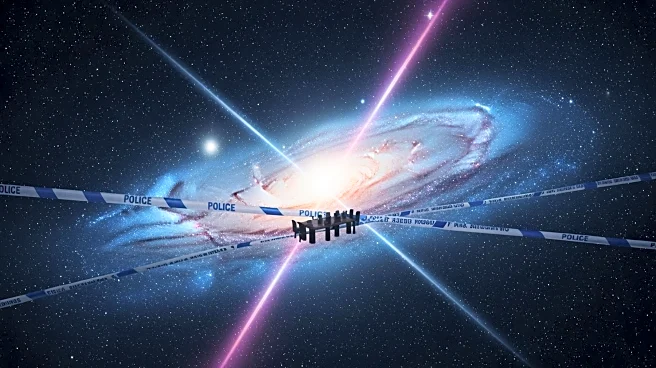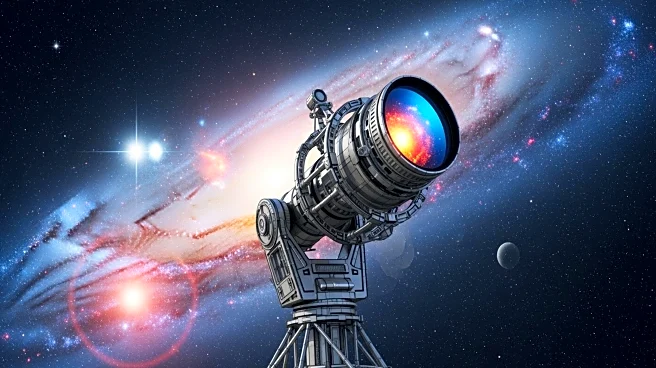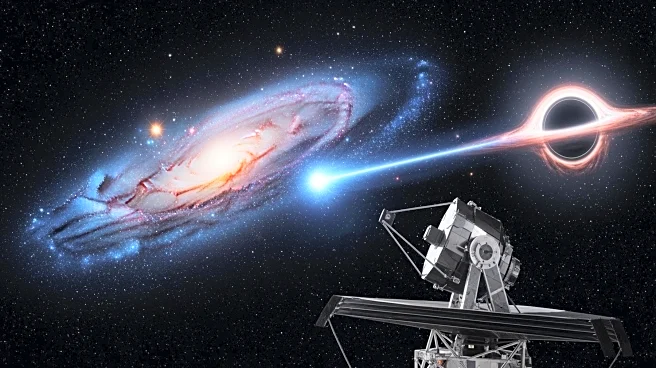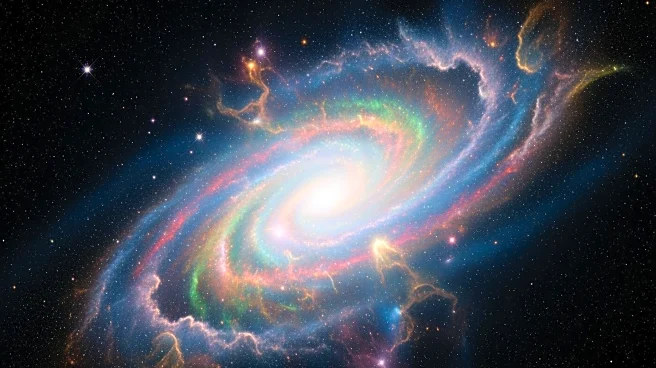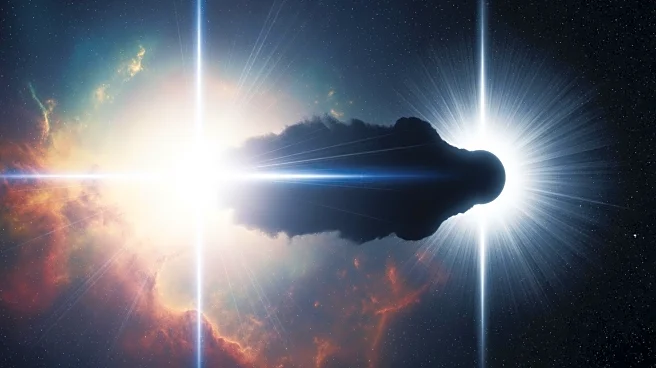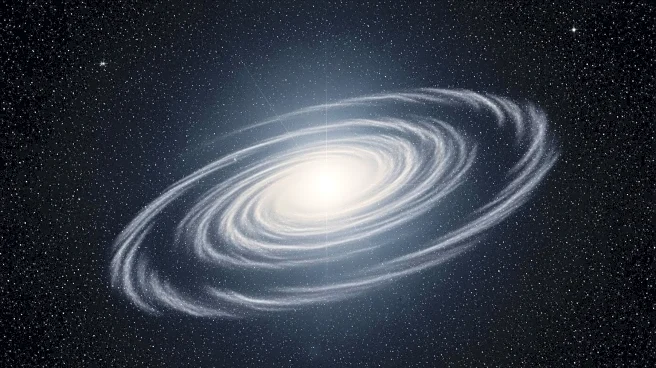What's Happening?
The James Webb Space Telescope has captured a remarkable image of a gigantic jet emanating from the M87 black hole. This observation confirmed the presence of synchrotron radiation, a phenomenon where light is emitted by charged particles spiraling through
magnetic fields. The image revealed the jet as a luminous pink ribbon, providing evidence of shocks and complex particle dynamics near the black hole. The observation also showed HST-1 splitting into two distinct substructures, confirming previous X-ray data models. Additionally, a faint C-shaped counter-jet was observed ejecting in the opposite direction of the main jet.
Why It's Important?
This discovery is significant for the field of astrophysics as it provides a deeper understanding of the behavior and properties of black holes. The ability to observe and confirm the dynamics of jets and their interactions with cosmic surroundings can lead to advancements in theoretical models of black hole physics. The findings could have implications for understanding the fundamental processes of particle acceleration and magnetic field interactions in extreme environments. This research enhances the scientific community's ability to study cosmic phenomena and contributes to the broader knowledge of the universe.
What's Next?
Continuous observations by the James Webb Space Telescope are expected to further unravel the mysteries surrounding black holes and their jets. Future studies may focus on the materials being ejected and how these jets interact with their cosmic environment. The scientific community anticipates that ongoing research will provide more detailed insights into the mechanisms driving these phenomena, potentially leading to new discoveries in the field of astrophysics.
